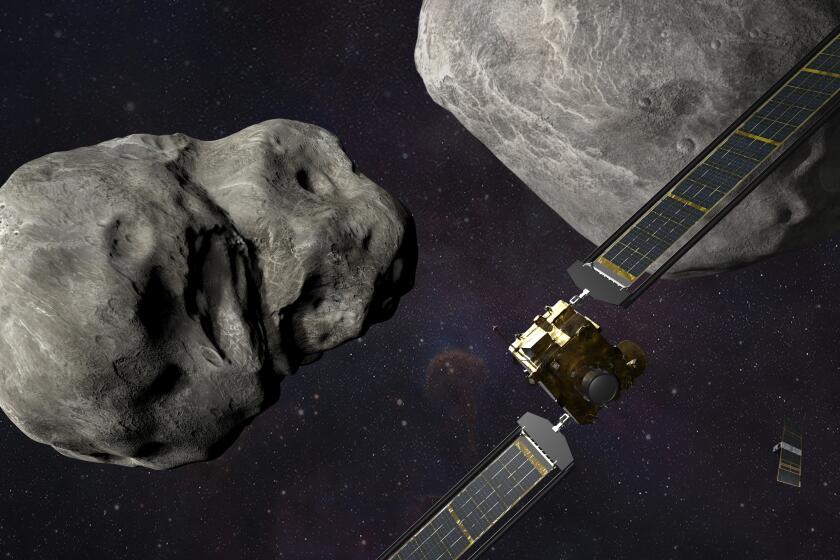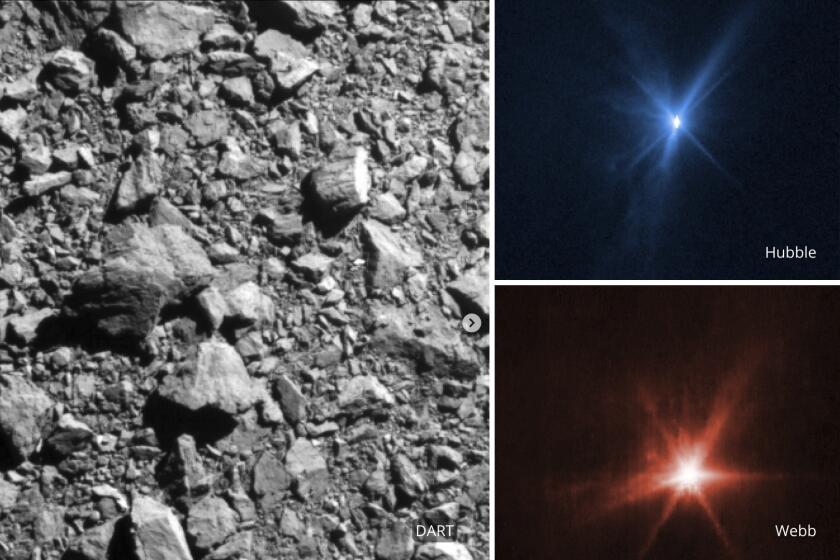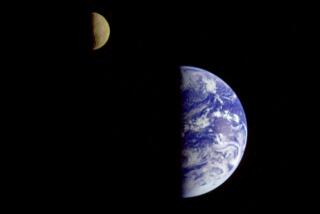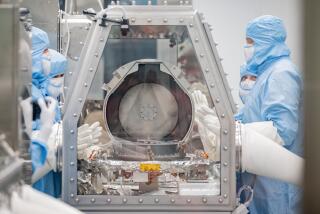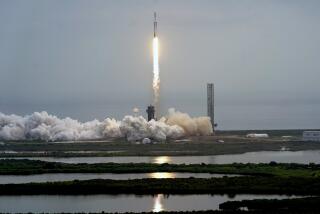An asteroid will just miss us in 2029. Scientists are making the most of a rare opportunity
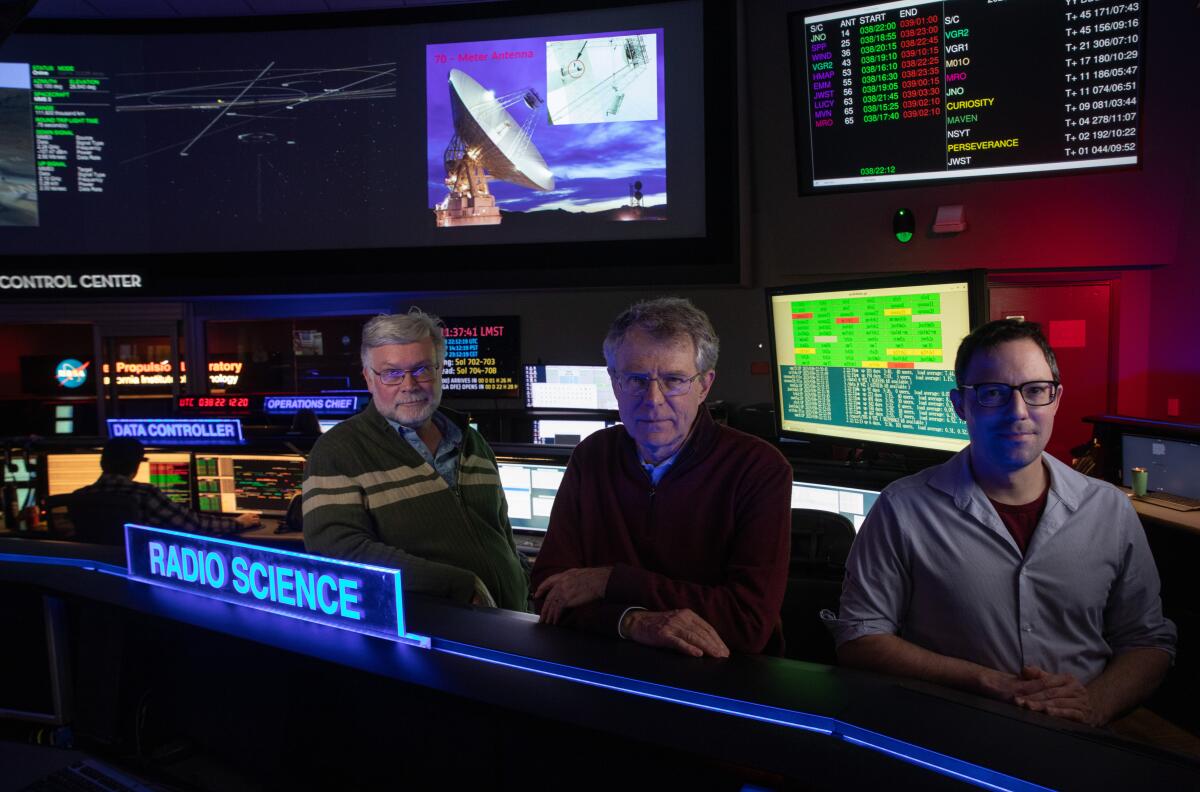
To be clear: The asteroid is not going to hit us.
There was a while there when it seemed like it could. Suffice to say those were heady days in the asteroid-tracking community. But as of March 2021, NASA has confirmed that there is absolutely zero chance the space rock known as 99942 Apophis will strike this planet for at least 100 years. So, phew. Cross that particular doomsday scenario off the list.
What remains true, however, is that on Friday, April 13, 2029, an asteroid wider than three football fields will pass closer to Earth than anything its size has come in recorded history.
An asteroid strike is a disaster; an asteroid flyby, an opportunity. And Apophis offers one of the best chances science has ever had to learn how the Earth came to be — and how we might one day prevent its destruction.
In the movies, incoming asteroids appear without warning from the depths of space and speed directly toward us until missiles or Bruce Willis heroically destroy them.
In real life, asteroids orbit the sun on elliptical paths. They are often spotted years, if not decades, before a potential collision — which is not great for dramatic tension but better for planetary survival.
A NASA spacecraft is about to clobber a small, harmless asteroid millions of miles away.
Apophis was discovered in 2004. After calculating its potential orbits, astronomers were startled to realize it had a 3% chance of hitting Earth in 2029. In a nod to its horrifying potential, they named it Apophis, after an Egyptian god of chaos.
“We were shocked,” said Paul Chodas, who manages NASA’s Near-Earth Object Program Office at the Jet Propulsion Laboratory in La Cañada Flintridge. “That is very serious and, actually, a very unexpected and rare event.”
Astronomers use a color-coded warning system called the Torino scale to gauge the degree of danger an asteroid or comet presents to Earth in the next 100 years. Since the scale’s adopted in 1999, none of the roughly 30,000 near-Earth objects known to exist in the solar system had ranked higher than 1 on the zero-to-10 scale.
Apophis was a 4.
The longer astronomers track an asteroid, the more clearly defined its orbit becomes. Within a few months, scientists were able to rule out the possibility of a 2029 strike. Within a few years, they were able to dismiss the even smaller chance of a hit in 2036.
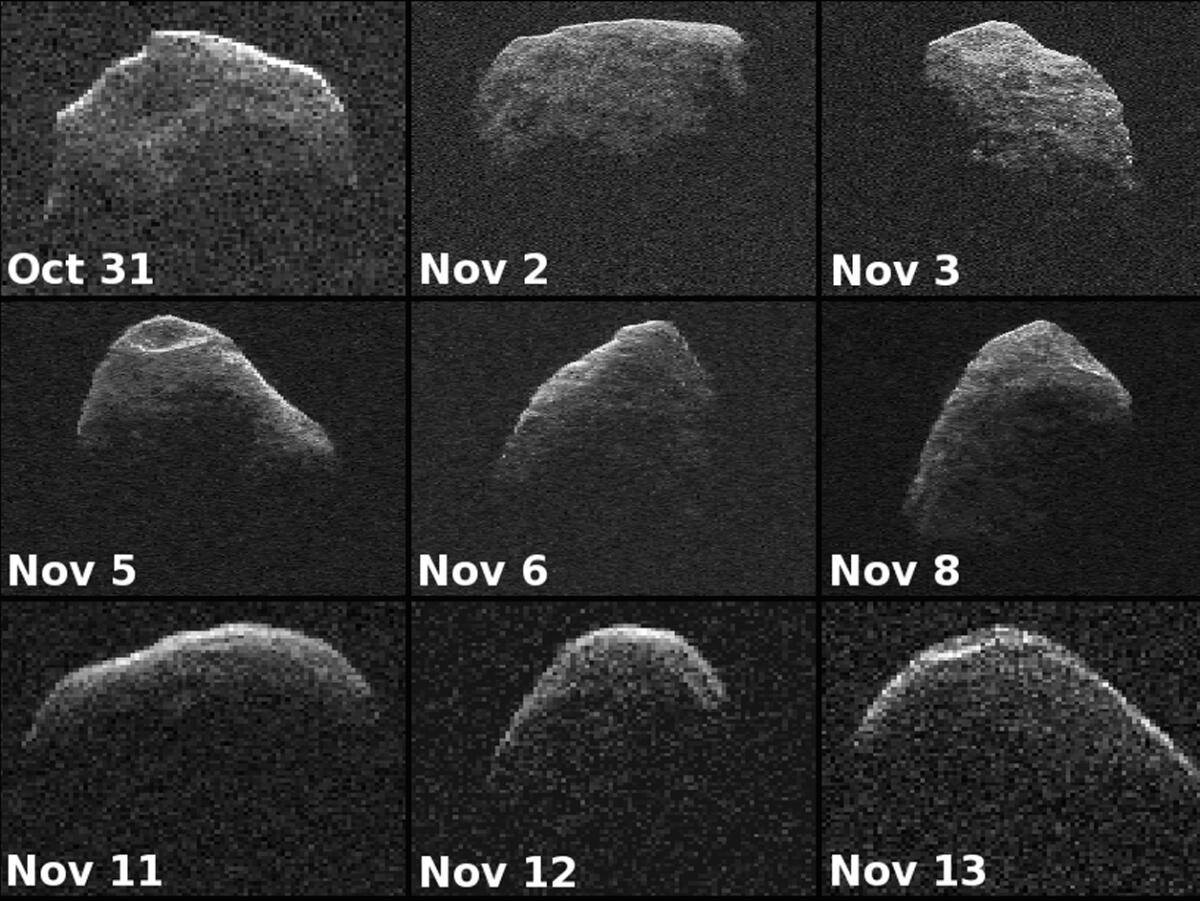
And in 2021, radar observations confirmed that Apophis will not strike when it passes us in 2068, leaving Earth in the clear for at least a century.
With humanity’s safety assured — from this threat, at least — the coast was clear to geek out on some asteroid science.
“We’ve never seen something that large get that close,” said Lance Benner, a principal scientist at JPL.
Doomsday chances dim: Asteroid won’t hit Earth in 2036, NASA says
“Close,” in the space world, is a relative term. At its nearest, Apophis will pass roughly 19,000 miles (31,000 kilometers) above Earth’s surface. That’s about one-tenth the distance to the moon.
No one on the ground will be tempted to duck, and it will not appear as a fireball swooshing across the heavens.
On the big night, Apophis will be visible with the naked eye from parts of Europe and Africa. (In Los Angeles, experienced stargazers might be able to spot it with binoculars around 3:30 a.m. on April 13.)
The asteroid close encounter presents “an unprecedented opportunity to study its physical properties and to help us learn things that we’ve never been able to learn before,” Benner said.

An approach this close from an asteroid this big occurs at most every few thousand years, said Davide Farnocchia, a navigation engineer at JPL.
“It’s something that almost never happens, and yet we get to witness it in our lifetime,” Farnocchia said. “We usually send spacecraft out there to visit asteroids and find out about them. In this case, it’s nature doing the flyby for us.”
From the ground, Apophis will resemble a star traversing the night sky, as bright as the constellation Cassiopeia and slower than a satellite. Though it may appear far away for those of us down here, it will in fact be near enough for NASA to reach out and touch it.
OSIRIS-REx, a spacecraft currently ferrying home samples from the surface of an asteroid called Bennu, will rendezvous with Apophis in 2029. Shortly after April 13, the craft — by then renamed OSIRIS-APophis EXplorer, or OSIRIS-APEX — will steer toward the asteroid until it is drawn into its orbit, eventually getting close enough to collect a sample from its surface.
Apophis is shaped like a peanut shell, a form astronomers call a “contact binary.” The hunk of nickel, iron and silicate is a relic from the earliest days of the solar system, a byproduct of the massive cloud of gas and dust that formed 4.6 billion years ago and eventually led to us.
“These asteroids are primordial samples,” Chodas said. “Learning about the composition will help us understand the history of the solar system and where these things came from.”
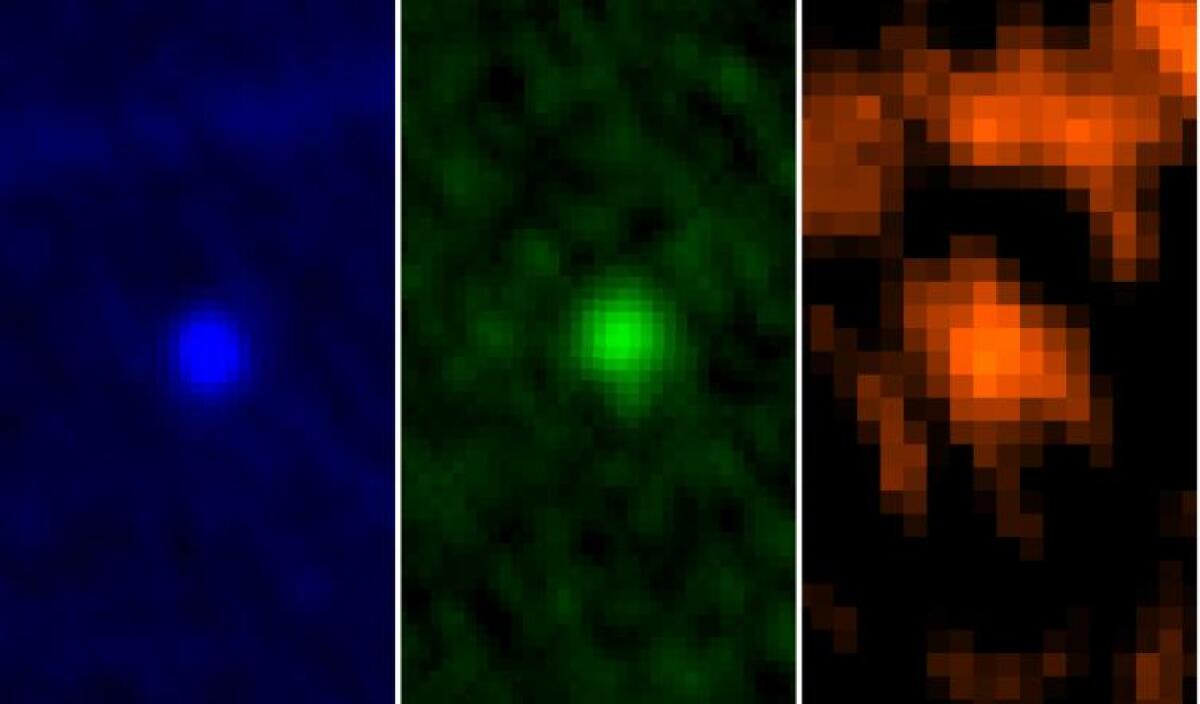
Given the proximity, researchers will also be able to study Apophis with ground-based tools that have never been deployed for an object this size.
On Dec. 27, researchers at the High-frequency Active Auroral Research Program (HAARP) in Gakona, Alaska, sent a low-frequency radio signal to an asteroid called 2010 XC15. It was part of a test to see if radio waves could penetrate an asteroid and send back data on its interior structure, said Mark Haynes, the JPL radar systems engineer who led the project.
Knowing an asteroid’s internal mass distribution would be extremely helpful if we needed to knock it out of our way.
Hundreds of space rocks hit Earth every year, and most are harmless. A big one, though, can wreak havoc far beyond its initial impact site.
The massive Chicxulub asteroid that 66 million years ago slammed into what is now the Yucatán peninsula in Mexico released an estimated 420 zettajoules of energy. (For context, the world’s collective electricity output in 2021 was about 0.5 zettajoules.)
The resulting heat pulse vaporized rock and sparked wildfires across much of the planet, followed by a years-long impact winter as a choking cloud of particulate matter blocked out the sun. By the time it was over, 75% of species were gone for good, including all non-avian dinosaurs.
The Chicxulub asteroid measured 7 miles across, the same as the city of Paris. Apophis is as long as the Eiffel Tower. A collision with an object that size would be less catastrophic but could still cause serious damage.
NASA’s DART mission diverted an asteroid, which means humans may not suffer the exact fate of dinosaurs.
NASA is working on a plan to deal with that. Last year, its Double Asteroid Redirection Test, or DART, spacecraft deliberately crashed into a rock 7 million miles away to see whether humans could change the trajectory of a celestial object. (Good news: We can.)
If we ever did have to deflect an incoming asteroid, that’s how we’d do it: not with a grand, Death Star-style explosion but with a speedy projectile strong enough to knock it ever-so-slightly off course.
“That mission was spectacularly successful and showed that that technique works,” Benner said. “Don’t send Bruce Willis and a bunch of oil drillers up there to blast it to smithereens.”
